
Sonic the Hedgehog Spinball, also known as Sonic Spinball, is a 1993 pinball video game developed by Sega Technical Institute and published by Sega. It is a spinoff of the Sonic the Hedgehog series. Players control Sonic the Hedgehog, who must stop Doctor Robotnik from enslaving the population in a giant pinball-like mechanism. The game is set in a series of pinball machine-like environments with Sonic acting as the pinball.

Pinball Fantasies is a 1992 pinball video game originally developed by Digital Illusions and published by 21st Century Entertainment in Europe for the Amiga home computers. It is the sequel to Pinball Dreams, which was released earlier in the same year on multiple platforms. In the game, players can choose between any of the four available playfields, both of which have their own thematic and main objectives in order to obtain the highest score possible.

Kirby's Pinball Land is a 1993 pinball video game developed by HAL Laboratory and published by Nintendo for the Game Boy. It was HAL Laboratory's third pinball video game after the MSX and NES title Rollerball and the Game Boy title Revenge of the 'Gator. It was also the first spin-off and second Game Boy title in the Kirby series, as well as the second pinball video game Nintendo published after the NES title Pinball. The game was rereleased on the Nintendo 3DS Virtual Console service in July 2012.

Pokémon Pinball: Ruby & Sapphire is a 2003 pinball game developed by Jupiter and published by The Pokémon Company and Nintendo for the Game Boy Advance handheld game console. It was first revealed at E3 2003. The North American release was done to coincide with the fifth anniversary of the North American release of Pokémon Red and Blue. It is based on Pokémon Ruby and Sapphire, and is a sequel to Pokémon Pinball for the Game Boy Color. In some ways, it plays like a traditional pinball game, where the objective is to get a high score by keeping the ball in play as long as possible and hitting bumpers. In keeping with the theme of Pokémon, it features Pokémon collection, where while the players play pinball, they must also capture the eponymous creatures.
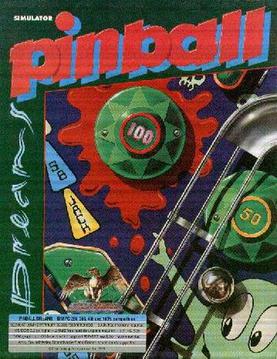
Pinball Dreams is a pinball simulation video game developed by Digital Illusions and originally released for the Amiga in 1992. It spawned several sequels, including Pinball Fantasies and Pinball Illusions. The MS-DOS port was digitally released by Rebellion Developments along with its sequel and Pinball Mania on February 22, 2011 on GOG.com with support for Microsoft Windows. It received an OS X build on April 23, 2013; and a Linux build on August 19, 2014.

Pinball is a pinball video game developed by Nintendo and HAL Laboratory and published by Nintendo for the Nintendo Entertainment System. It is based on a Game & Watch unit of the same name, and was first released for the Famicom in Japan in 1984. It was later released as an arcade game for the Nintendo VS. System in Japan and North America in 1984. In 1985, it was a launch game for the Nintendo Entertainment System in North America.

Over one hundred video games based on the Star Wars franchise have been released, dating back to some of the earliest home consoles. Some are based directly on films while others rely heavily on the Star Wars Expanded Universe.
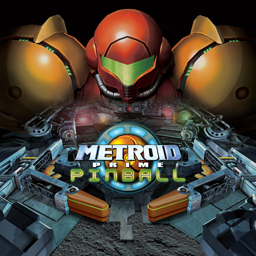
Metroid Prime Pinball is a pinball video game themed after the Metroid series. The game uses the graphical style and various story elements from Metroid Prime. It was developed by Fuse Games and published by Nintendo for the Nintendo DS in North America and Australia in 2005, in Japan in 2006, and in Europe in 2007. Metroid Prime Pinball uses the basic mechanics of pinball, along with typical pinball items. New mechanics are introduced, such as wall jumping and the ability to fire weapons. The Nintendo DS's touchscreen can be nudged with a finger to alter the pinball's trajectory while in motion.
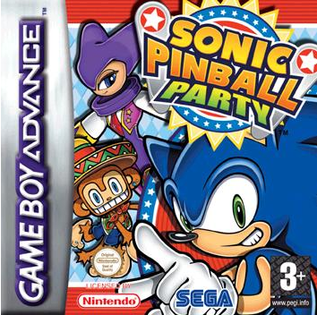
Sonic Pinball Party is a video game released for the Game Boy Advance in 2003. It is a celebration of sorts for Sonic Team featuring many references to its previous games, mostly prominently Sonic the Hedgehog, Nights into Dreams, and Samba De Amigo. There was also a release on a Twin Pack cartridge bundled with Sonic Battle and Sonic Advance respectively in 2005.

Alien Crush is a pinball video game developed by Compile for the PC Engine/TurboGrafx-16. It was released in 1988. The game is the first installment in the Crush Pinball series. It was followed by three sequels, Devil's Crush, Jaki Crush, and Alien Crush Returns. Alien Crush was later rereleased on the Virtual Console and on the PlayStation Network.

The Pinball of the Dead is a pinball video game developed by Sega's Wow Entertainment division and published by Sega in Japan and THQ in North America. It was released for the Game Boy Advance in 2002 and 2003. Based on Sega's The House of the Dead series of light gun games, particularly The House of the Dead and The House of the Dead 2, the game contains three tables and includes a "Challenge" mode. Full-motion video sequences and audio samples from previous games were also added. The game was first announced during the 2001 Nintendo Space World. Composer Hitoshi Sakimoto was involved with making the game's music.
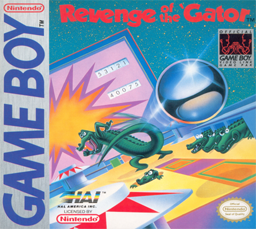
Revenge of the 'Gator, known in Europe as Pinball: Revenge of the 'Gator, is an alligator-themed pinball video game developed and published by HAL Laboratory. It was released for the original Game Boy in 1989/1990. The objective of the game is to score as many points as possible without having the player's pinball eaten by the gator.

Pinball FX is a pinball machine video game for the Xbox 360. It was developed by Zen Studios and published by Microsoft Game Studios. It was released on April 25, 2007 via the Xbox Live Arcade service. The game features three tables, with six more available as downloadable content, leaderboards and online multiplayer. A sequel to the game, Pinball FX 2 was released on October 27, 2010.
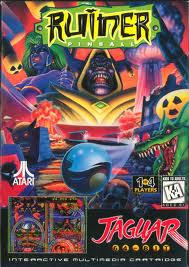
Ruiner Pinball is a 1995 pinball video game developed by High Voltage Software (HVS) and published by Atari Corporation for the Atari Jaguar. The game features two different pinball tables: the nuclear war-inspired Ruiner, and the medieval-themed Tower. Each table contains targets for the player to hit with the ball, increasing their score before the ball is lost. It was marketed as the first title to support the ProController, a redesigned Jaguar controller that added three more face buttons and two triggers.

Devil's Crush is a pinball video game developed by Compile for the TurboGrafx-16 and released in 1990. The second installment in the Crush Pinball series after Alien Crush, the game has an eerie occult theme with skulls, skeletons, and demons. It was later followed by Jaki Crush and Alien Crush Returns.
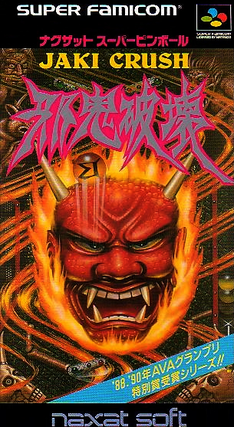
Jaki Crush is a pinball video game developed by Compile and published by NAXAT Soft. Jaki Crush was released exclusively in Japan for the Super Famicom in 1992. The game is the third in the Crush Pinball series, and was preceded by Alien Crush and Devil's Crush on the TurboGrafx-16.

The Little Mermaid II: Pinball Frenzy is a 2000 pinball video game developed by Left Field Productions and published by Nintendo for the Game Boy Color. First released in North America on September 24, 2000, it was later made available in PAL regions on March 16, 2001.

Virtual Fishing is a 1995 fishing video game developed by Locomotive Corporation and published by Pack-In-Video in Japan for the Virtual Boy. The player participates in a series of fishing tournaments at various different locations by catching a large number of fishes with a high average weight under a time limit. Its gameplay consists of two segments and features two additional modes of play.
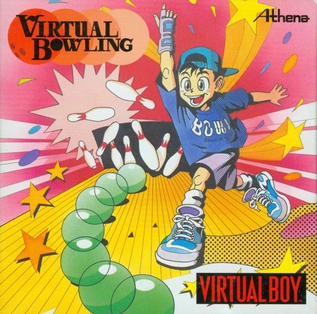
Virtual Bowling is a 1995 sports video game developed and published by Athena in Japan for the Virtual Boy. In the game, the player participates in a series of bowling tournaments consisting of four 10-frame matches at various alleys against computer-controlled opponents, in order to obtain a high score and progress further. Its gameplay, featuring three modes of play, is viewed from a first-person perspective.




















